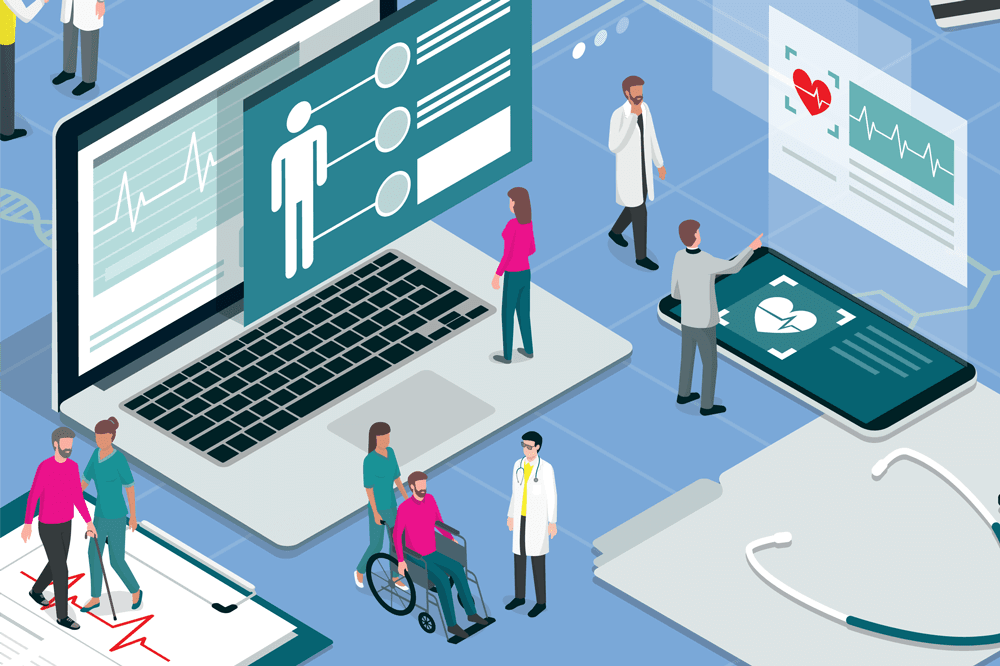Intensive care units (ICU) remain overwhelmed in the UK and across the globe. But what if clinicians could rapidly detect pathogens and provide same-day personalized care, improving diagnostics and overburdened ICUs all at once? A collaborative project between the UK government, the UK National Health Service (NHS), Synnovis, and King’s College London aimed to explore this possibility. We connected with Luke Blagdon Snell, Senior Research Fellow in infectious diseases, and Adela Alcolea-Medina, Next Generation Sequencing Lead, to learn more about this initiative.

Were there any specific clinical challenges or unmet needs in the ICU that inspired this study?
Luke Blagdon Snell: ICU doctors face immense pressure to quickly and accurately identify the cause of serious infections so they can deliver effective treatment and help patients recover. They also need to assess whether an infection poses a broader public health risk – particularly in the context of rising antibiotic resistance and emerging infectious diseases.
Yet during those crucial early hours, clinicians often lack enough information to make fully informed decisions. This leads to a difficult choice: use broad-spectrum antibiotics, which may be unnecessary and contribute to resistance, or take a more targeted approach that risks missing the real cause – potentially compromising patient outcomes. It’s a dilemma faced daily by clinicians around the world.
Traditional microbiology methods, such as agar culture, are slow – often taking several days to yield results. This delay means doctors frequently must begin treatment without knowing the exact cause of infection. To cover all possibilities, broad antibiotics are used “just in case.”
Compounding the issue, some pathogens don’t grow in culture at all and require alternative tests like PCR or serology. And in many respiratory infection cases, patients have already taken antibiotics before arriving at the hospital, which can suppress bacterial growth and make cultures even less reliable.
At the core, there’s a bigger problem: multiple samples must be taken and distributed across different tests. There must be a more efficient, streamlined approach.
Why did you decide to use a pan-microbial metagenomics approach over conventional diagnostics?
Adela Medina-Alcolea: Pan-microbial metagenomics allows the detection of all types of microorganisms – bacteria, fungi, viruses and parasites – with one test, in one tube. This involves sequencing all the genetic material (DNA and RNA) from micro-organisms in the sample. Coupled with long read nanopore sequencing, which means the data can be analysed in real time as the genetic material is sequenced, this has the potential to detect micro-organisms rapidly and allows us to instigate the correct treatment for severe infections and sepsis.
Please tell us about your automated bioinformatic pipeline – how does this support diagnostics?
LBS: Imagine we have sequenced the genetic code of the microorganisms in the sample. We are left with a string of genetic bases – A, T, C, and Gs – and we need to work out which organisms they belong to. To do this we automatically analyze the genetic information as it is sequenced and match it against a database of micro-organisms. Our database contains over 85,000 genomes from different micro-organisms so we can identify whatever is in the sample. Compare this to a targeted PCR where you have to pre-specify just a handful of micro-organisms to identify.
How did you validate your metagenomic findings against conventional microbiology?
AAM: We spent two years comparing the results from the pan-microbial metagenomics against standard diagnostics like culture, PCR, and antigen tests. This helped us refine our database and understand how to interpret the data – for instance, deciding how many fragments of a genome we need to detect to be sure the microorganism is there. We introduced controls for the implementation of the workflow in clinical laboratories and to ensure the accuracy of the results provided by pan-microbial metagenomics.
How did the same-day metagenomics data influence patient management in real time?
LBS: The most striking benefit is getting rapid detection of organisms causing infection. This removes uncertainty and allows patients to receive the correct treatment, often on the day of admission. Once we identify the organisms, ICU doctors can prescribe targeted antibiotics. With some bugs we can even predict if they have extra antimicrobial resistance and change the antibiotics accordingly.
We’ve also noticed ICU doctors are using metagenomics in another way – some pneumonias are caused by autoimmunity or inflammation, rather than infection. If metagenomics doesn't detect any organisms, it suggests there is an illness that requires treatment to modulate the immune system, rather than antibiotics to kill micro-organisms. We found metagenomics was helping this decision – along with the rest of the tests available like CT scans – in around 20 percent of cases.
How did the study contribute to pathogen surveillance or infection control within the ICU?
AAM: Metagenomics doesn’t just identify microbes – it also shows their genetic details. This helps us spot rare or new variants and see if cases are linked, which can signal an outbreak in a hospital or the community. We can check this data ourselves, but we also send it in real-time to the UK Health Security Agency (UKHSA). They can use it to track possible epidemics or even pandemics, like bird flu. As more NHS hospitals use metagenomics, the UKHSA gets a broader view of infection trends across the country.
How scalable is this approach for use beyond a single centre or in lower-resource settings?
LBS: The UK government has agreed to fund a network of NHS Trusts to implement this technology – there are now six sites using metagenomics to help treat their patients and provide surveillance data for the UK. Using this technology to both help NHS patients and collect surveillance data is likely to be cost-effective and sustainable, even with limited budgets.
Any plans to continue with this research?
AAM: Metagenomics is now implemented in our diagnostic lab as a routine service for patients. This gives us room to understand its benefits in different populations and in infections outside the respiratory system.
A future avenue of research will be to understand whether we can use genomics to analyze the body's inflammatory response. Some people may develop abnormal immune responses to infection that cause disease as well – if we can understand what’s happening, we may be able to provide personalized treatment to prevent damaging immune responses.
We’ve also recently received government funding to expand metagenomics in up to 30 sites across the UK, which will bring personalized care to more patients.
How do you envision the role of metagenomic diagnostics evolving over the next 5-10 years?
LBS: I think metagenomics will become a routine test for infections in hospitals. The key question is which patients will benefit most. Since it gives fast and broad results, it’s a strong option as a first-line test for very ill patients. Its use will partly depend on cost-effectiveness, but like other technologies, the price is likely to come down over time.




